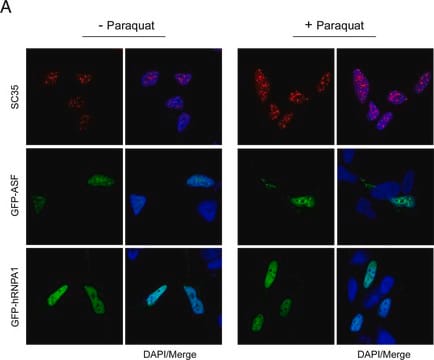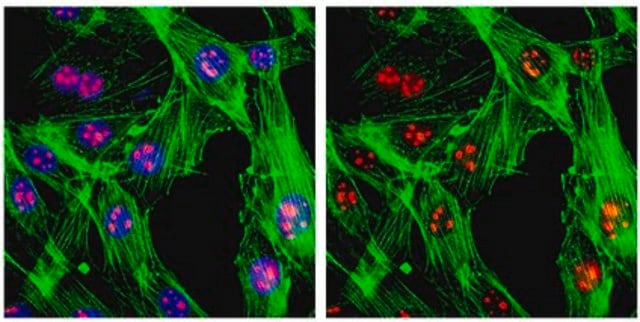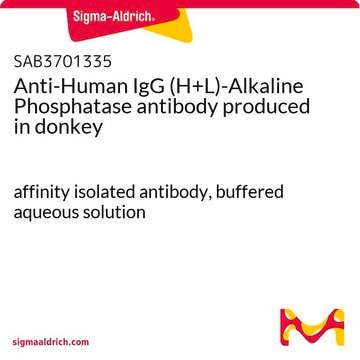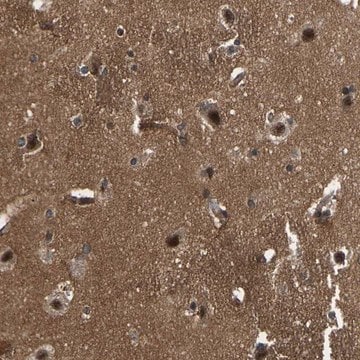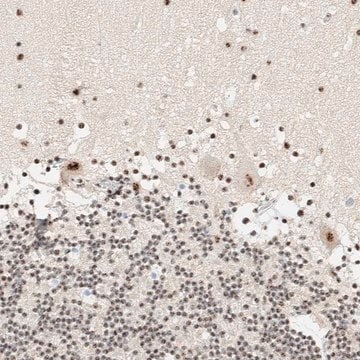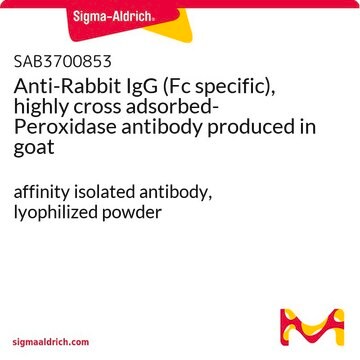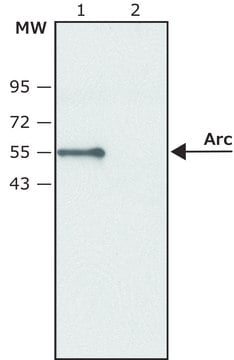SAB4200725
Anti-Splicing Factor SC-35 antibody, Mouse monoclonal
clone SC-35, purified from hybridoma cell culture
Synonim(y):
Anti-PR264, Anti-SFRS2, Anti-SFRS2A, Anti-SRp30b, Anti-Splicing component 35 kDa (SC35), Anti-serine/arginine-rich splicing factor 2 (SRSF2)
About This Item
Polecane produkty
pochodzenie biologiczne
mouse
forma przeciwciała
purified from hybridoma cell culture
rodzaj przeciwciała
primary antibodies
klon
SC-35, monoclonal
Postać
buffered aqueous solution
masa cząsteczkowa
~35 kDa
reaktywność gatunkowa
human, mouse, quail, hamster, frog, porcine, rat
stężenie
~1.0 mg/mL
metody
ELISA: suitable
dot blot: suitable
immunoblotting: suitable
immunofluorescence: 0.125-0.25 μg/mL using HeLa cells
immunohistochemistry: suitable
immunoprecipitation (IP): suitable
numer dostępu UniProt
Warunki transportu
dry ice
temp. przechowywania
−20°C
docelowa modyfikacja potranslacyjna
unmodified
informacje o genach
human ... SRSF2(6427)
Opis ogólny
Immunogen
Zastosowanie
- dot blot
- enzyme linked immunosorbent assay (ELISA)
- immunofluorescence
- immunohistochemistry
- immunoblotting
- immunoprecipitation
Działania biochem./fizjol.
Postać fizyczna
Oświadczenie o zrzeczeniu się odpowiedzialności
Not finding the right product?
Try our Narzędzie selektora produktów.
Kod klasy składowania
10 - Combustible liquids
Klasa zagrożenia wodnego (WGK)
WGK 1
Temperatura zapłonu (°F)
Not applicable
Temperatura zapłonu (°C)
Not applicable
Certyfikaty analizy (CoA)
Poszukaj Certyfikaty analizy (CoA), wpisując numer partii/serii produktów. Numery serii i partii można znaleźć na etykiecie produktu po słowach „seria” lub „partia”.
Masz już ten produkt?
Dokumenty związane z niedawno zakupionymi produktami zostały zamieszczone w Bibliotece dokumentów.
Nasz zespół naukowców ma doświadczenie we wszystkich obszarach badań, w tym w naukach przyrodniczych, materiałoznawstwie, syntezie chemicznej, chromatografii, analityce i wielu innych dziedzinach.
Skontaktuj się z zespołem ds. pomocy technicznej